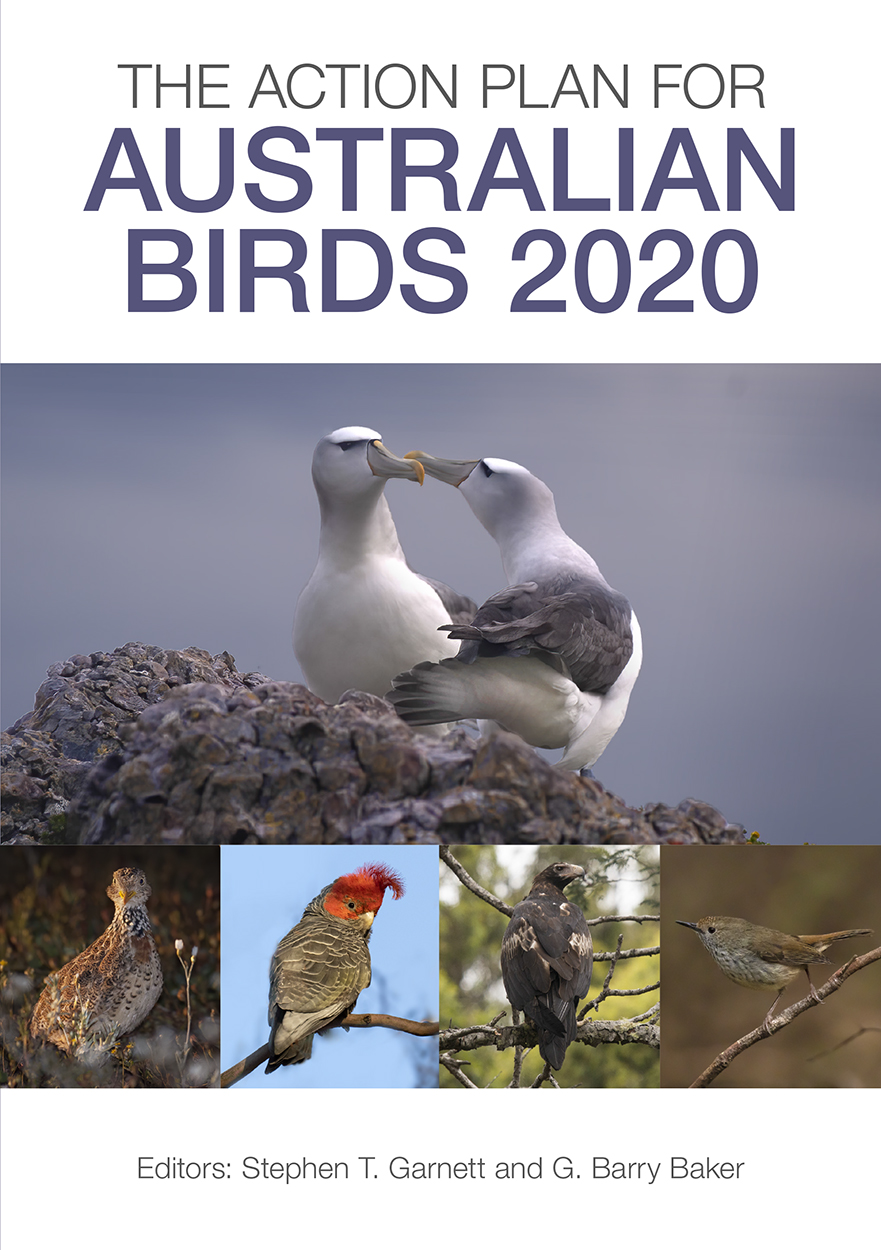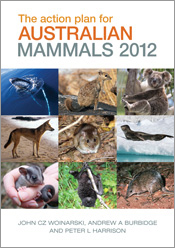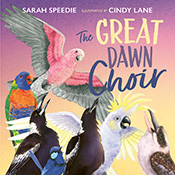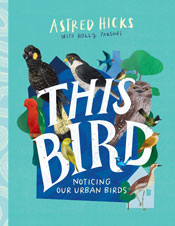The Action Plan for Australian Birds 2020

Edited by: Stephen T Garnett, G Barry Baker
An overview of the 2020 status of all Australian birds, and the actions needed for conservation.
The Action Plan for Australian Birds 2020 is the most comprehensive review of the status of Australia's avifauna ever attempted. The latest in a series of action plans for Australian birds that have been produced every decade since 1992, it is also the largest. The accounts in this plan have been authored by more than 300 of the most knowledgeable bird experts in the country, and feature far more detail than any of the earlier plans. This volume also includes accounts of over 60 taxa that are no longer considered threatened, mainly thanks to sustained conservation action over many decades. + Full description
This extensive book covers key themes that have emerged in the last decade, including the increasing impact of climate change as a threatening process, most obviously in Queensland's tropical rainforests where many birds are being pushed up the mountains. However, the effects are also indirect, as happened in the catastrophic fires of 2019/20. Many of the newly listed birds are subspecies confined to Kangaroo Island, where fire destroyed over half the population. But there are good news stories too, especially on islands where there have been spectacular successes with predator control. Such uplifting results demonstrate that when action plans are followed by action on the ground, threatened species can indeed be recovered and threats alleviated.
Certificate of Commendation, The Royal Zoological Society of NSW 2022 Whitley Awards: Highly Commended
- Short descriptionReviews
"This book is an up-to-date review of the status of endangered Australian birds ... each chapter (species account) is the product of multiple authors; in all this has involved more than 300 experts. In a sense this Action Plan is like a dictionary. It is very unlikely to be read from cover to cover but will be an absolute essential reference to dip into for details. It will provide critical answers to the main issues that define the present status of endangered Australian Birds."
Peter Fullagar, Canberra Bird Notes, May 2022
"The 2020 Action Plan is a thought-provoking document that is well worth reading by everyone with a serious interest in bird conservation. It will undoubtedly be a very important reference for conservation agencies in directing land management initiatives and should inspire specific research directions for those agencies, other institutions and private individuals for at least the next decade"
Jeff Hardy, Corella, 2022
Details
Hardback | December 2021 | $150.00ISBN: 9781486311903 | 816 pages | 297 x 210 mm
Publisher: CSIRO Publishing
Illustrations, Maps
ePDF | December 2021
ISBN: 9781486311910
Publisher: CSIRO Publishing
Available from eRetailers
ePUB | December 2021
ISBN: 9781486311927
Publisher: CSIRO Publishing
Available from eRetailers
Features
- Provides an overview of the conservation status of all Australian birds in 2020, including birds not yet threatened but known to be declining.
- Includes accessible status information for each species with reasons for listing and distribution maps.
- Outlines the actions needed for conservation and describes cases where conservation action has allowed downlisting because species are now secure.
- Identifies the birds most threatened by the 2019/20 fires and draws attention to the broader role climate change is playing in bird declines.
Contents
ForewordAbout the editors
Acknowledgements
Introduction
The IUCN Red List Status of Australian bird taxa of national conservation concern
Taxa profiles
Artist index
Index
Authors
Stephen T. Garnett, Professor of Conservation and Sustainable Livelihoods at Charles Darwin University, drafted the first review of Australia's threatened bird species in 1990. He wrote the first Action Plan for Australian Birds in 1992, the second Action Plan in 2000, in association with Gabriel Crowley, and the third, in 2010, with Judit Szabo and Guy Dutson. He and Dr Gabriel Crowley were jointly awarded the Serventy Medal in 2008. He has studied and written about many threatened Australian bird species, most notably the Golden-shouldered Parrot and the Kangaroo Island Glossy Black-Cockatoo. He helped bring the idea of Important Bird Areas to Australia, and is a Fellow of BirdLife Australia where he serves on the Research and Conservation Committee and has coordinated the Threatened Species Committee since 2003. He is also a Conference-Appointed Scientific Councillor for birds with the Convention on Migratory Species, established the International Union for Biological Sciences working group on taxonomic lists and undertakes research on Indigenous natural-resource based livelihoods, renewable energy and human migration.
G. Barry Baker has been interested in the study of birds and other wildlife since he was a teenager in the 1960s. Employed for many years with the Australian Government, he worked on a range of national park and wildlife issues until establishing an environmental consulting practice in 2003. His work both with government and multilateral environmental agreements over the last 25 years has focused on wildlife management and conservation biology of threatened birds, particularly the management of bycatch in commercial fisheries and including the development and testing of technical bycatch mitigation measures. He has held a number of international appointments including that of Conference-Appointed Scientific Councillor for Bycatch to the Convention on Migratory Species (2003–present), chair of the Seabird Bycatch Working Group of the Agreement for the Conservation of Albatross and Petrels (2006–2013), as well as chair of a number of BirdLife Australia committees including the Research and Conservation Committee, National Monitoring Committee, and Key Biodiversity Area Committee. Barry has more than 80 peer-reviewed publications and many reports dealing with various aspects of wildlife management and conservation of threatened birds and mammals.








